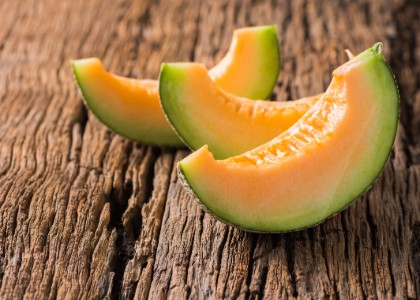
Could Food Combining Help You?
By Claire Georgiou, Reboot Naturopath, B.HSc ND
Food combining is a type of diet that’s been around for a few decades. It’s based on the idea that different foods digest at different rates.
Specifically, the diet looks at macronutrients such as carbs/starches, fruits, vegetables, proteins, and fats.
Food combining is based on the principle that different foods require different pH levels to be digested adequately, and different macro nutrients have different transit times through the digestive system.
The main theory is that certain food combinations such as protein and starchy carbohydrates are more likely to be problematic. It may be why a burger and fries can leave many people with a belly ache.
The idea is that certain food combinations will sit for longer periods of time in the digestive system and will not adequately digest, causing many abdominal and digestive symptoms such as nutrient malabsorption, bloating, burping, flatulence, weight gain, diarrhea and/or constipation, other symptoms that may be associated include fatigue, nutrient deficiencies, muscle aches and pains, and poor concentration.
The rules of food combining are:
1) Always eat fruit, and especially melon, on an empty stomach, or at least 20 minutes before eating anything else.
2) Eat starches alone, (such a rice, bread, pasta) or with cooked non-starchy vegetables, like greens.
3) Eat meat, dairy, fish, and eggs, and other high-protein foods alone or with cooked non-starchy vegetables.
4) Eat nuts, seeds, and dried fruit with raw vegetables.
There is little scientific evidence that supports this way of eating, although there are some testimonials that report positive health changes.
The pH of our digestive system changes from a very high pH in the stomach to a more alkaline environment in the small intestine, which is important for all types of foods to be digested correctly.
The digestive system releases enzymes for protein, carbohydrate and fat metabolism. As these foods pass through the GIT, all these enzymes are produced when we eat, while foods move through the digestive system. All the macros are churned up together to form chyme that is all digested together as it passes through.
Proteins digest mostly in a higher acidic environment which occurs in the stomach while fats and carbohydrates are digested primarily in the more alkaline environment of the small intestine, the pH levels vary depending on where the food is in the digestive system rather then what food it is.
When following the principles of food combining, the food may pass through the digestive system quicker but it also means you might feel hungrier sooner. A more complex meal gets digested more slowly and leaves you feeling fuller for longer.
It is also important to be mindful that food combining is vital for some nutrients to be absorbed adequately as combining fats with orange and yellow vegetables such as sweet potato, squash and pumpkin helps to absorb the flavonoids and carotenoids more effectively, since they are fat soluble nutrients.
Combining certain macros helps to delay gastric emptying, which will leave you less hungry and with longer periods of satiety. This can be especially important for people who suffer with low blood sugar levels, weight concerns or diabetes.
When you minimize the complexity of a meal and potentially the size, it may help to make the meal easier to digest. So that’s a benefit to food combining. It also encourages people to consume lighter more thoughtful meals, which are more likely to be leaner and healthier as the recommendations are based on eating whole foods.
Most junk food and processed meals include all the combinations that are not recommended, so these will be automatically taken out of the diet such as pizza, breaded chicken and other starchy foods with proteins and fats, which are more likely to cause weight gain and stimulate a drug-like reaction in the brain that can often be addictive.
Another reason why people may experience weight loss may be that separating fat from starchy carbohydrates can help you to lose weight along with eating smaller portions overall.
What About Juicing?
When it comes to juicing, I sometimes see the question about juicing and food combining, as it’s recommended to avoid consuming fruit and some vegetables together. This is something I leave up to each individual but I don’t see any need to do this unless you find making this change beneficial.
Juices are pre-digested to some extent and these combo recommendations work very well for most people who suffer with digestive issues and often helps to resolve them as it gives their digestive system a break. Fresh juices are an easily assimilated liquid that is packed full of nutrients and plant compounds that provide vitality and health changes.